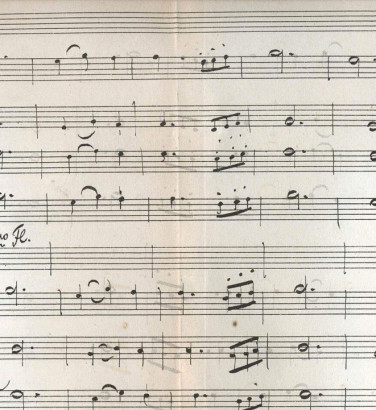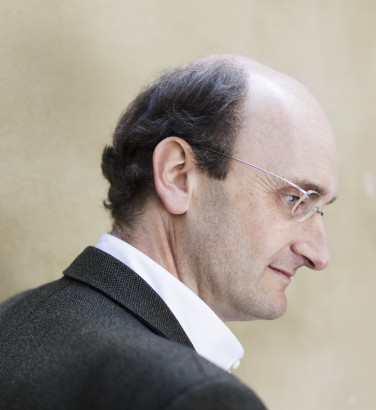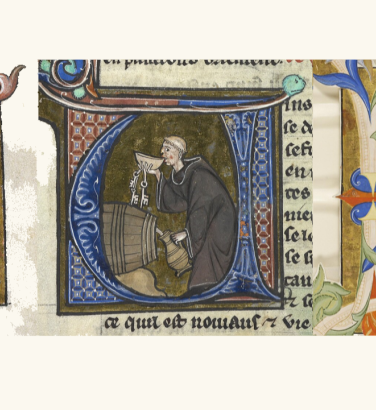
Ravel and the art of orchestration
25 Mar 2024
News Story
Detail from the poster advertising the premiere of the Piano Concerto in G, part of an all-Ravel concert held at the Salle Pleyel in Paris, 14 January 1932
Of all the composer’s skills, knowing how to write for the orchestra is perhaps the most overlooked. It seems almost a given that a creator of music will know how to replicate the sounds in their head on paper so that these may be conveyed to audiences.
In fact, orchestration is very much taken for granted. The best most composers can hope for is to be admired for one very particular aspect of their orchestral writing: just as a feature of Mozart’s best piano concertos is the dialogue between the soloist and the wind instruments, so Beethoven is recognised for his innovative use of the timpani. Fast forward into the 19th century and we find Mendelssohn frequently writing delicate lines for the upper strings, most famously in the fairy music of his Midsummer Night’s Dream. Later, Wagner's music would be easily identifiable by the breadth of his scoring for brass, amplifying its sound with new instruments such as the Wagner tuba.
At the other end of the scale, a small number of composers are prone to being criticised for their orchestral writing. Chopin's orchestral writing is sometimes accused of being workmanlike and no more – befitting a composer whose focus was so much on his own instrument, the piano – and Schumann's can still be a point of contention among conductors who fail to appreciate the subtlety of his craft. It is also one of the few complaints anyone ever makes about Bach, whose enormously long phrases of very quick notes are not the easiest to negotiate for wind players (or singers): fitting in a breath amid flurries of semiquavers can be quite a challenge. It's a rare case of musical genius superceding practical considerations – not unlike Beethoven, whose deafness seemingly made him unaware of the huge technical demands he made of his musicians.
Straight away the ideas flow in upon me, directly from God, and not only do I see distinct themes in my mind's eye, but they are clothed in the right forms, harmonies, and orchestration.
The exponential growth of the orchestra in the mid-19th century brought with it the first major textbook on orchestration. Berlioz’s Grand Treatise on Modern Instrumentation and Orchestration sets out a wealth of information on the capabilities of orchestral instruments and how best to make use of them, providing a fascinating insight into the orchestra of the time. All of the instruments you’d expect are covered, with the saxophone among the notable newcomers, and several instruments whose heyday was arguably long since past, such as the viola da gamba, basset horn and ophicleide.
The impact of Berlioz’ work would be felt far into the next century. Many of the great orchestral composers benefitted from its insights, including Strauss, Mahler and Rimsky-Korsakov, who would himself go on to write another seminal work on the subject. His Principles of Orchestration was completed posthumously and published in the early 1920s.
The influence of Rimsky’s views of orchestration can be heard on the works of his pupil Stravinsky, whose ballet The Firebird often sounds like a brilliant distillation of his teacher’s music, albeit pushed up several notches. The young Russian had settled in Paris, where his music would in turn have a lasting effect on a whole generation of fashionable young French composers, inspired by the precision and clear textures he brought to his scores. To be fair, French music had been known for its vivid orchestration since the days of Rameau (in the early 18th century), but the Impressionist subtleties of Debussy and Poulenc’s sense of mischief have their roots in Stravinsky. If any composer truly took on his mantle, however, this was Ravel, who still stands as one of the very finest orchestrators, of any period.
One of the reasons Ravel stands out among the great composers is in having orchestrated a significant amount of piano music (mostly his own), and with uncommon skill at that. Whether it’s Le tombeau de Couperin, Pavane pour une infante défunte or Ma mère l'Oye (Mother Goose), there is nothing in their orchestral versions to betray their pianistic origins, something lesser musicians can struggle with. (Prokofiev was known sometimes to avoid composing at the piano precisely so as not to fall into this easy trap.) Whatever instruments Ravel writes for, the result sounds both thoroughly idiomatic and inspired: there's a reason his orchestration of Mussorgsky's Pictures at an Exhibition is the only one to have stood the test of time.
Ask Ravel to put piano and orchestra together, however, and the sparks really fly. His Piano Concerto in G (composed from 1929-31 and played by the Orchestra with Steven Osborne in April 2024, along with the afore-mentioned Pavane) is so full of deft little touches that everyone will have their favourites. From the jolt of the start – a whipcrack before the main theme is introduced on the piccolo – to the mysterious harp cadenza (a moment when time seems to stand still), the first movement alone offers an embarrassment of riches. The finale is unabashed fun, but the true standout is the slow movement: if its opening melody is captivating enough played by the soloist, it reaches another plane altogether when it returns on the cor anglais, accompanied by piano figurations as delicate as the finest lace.
As Ravel's last purely instrumental work, the Piano Concerto in G should perhaps mark the culmination of his career as an orchestral composer, but it's really the icing on a remarkably fine cake. If he did ever outdo himself, we should perhaps look back a couple of years (to 1928) to his most popular work.
Consisting of the same tune being played over and over again, seemingly ad nauseam, Boléro should be deadly dull. The only sense of progression – and it’s a bit of a stretch to call it that – comes from the music building (very slowly) from impossibly quiet to incredibly loud, over a full quarter of an hour. Ravel himself was pretty dismissive of its qualities, but surely only a genius could get away with writing a piece like this. It’s precisely because of its carefully honed orchestration that Boléro is raised from a frankly slight piece of music into something utterly riveting.
The Piano Concerto in G adds a wealth of catchy musical ideas, ripe for development, and lets Ravel really shine. He clearly had a soft spot for this piece: asked by Marguerite Long (its dedicatee and first performer) which of his two piano concertos he preferred, he responded "yours, it's more Ravelian."
Related Stories
![]()
Unfinished symphonies
15 December 2025
Your starter for ten: besides Schubert, who has an unfinished symphony to their name?![]()
Andrew Manze: "I've always loved Viennese waltzes and polkas"
1 December 2025
Our Principal Guest Conductor is really looking forward to conducting our Viennese New Year concerts!![]()
The medieval carol
24 November 2025
For this year's Christmas article, we look back at some very early festive carols ...


